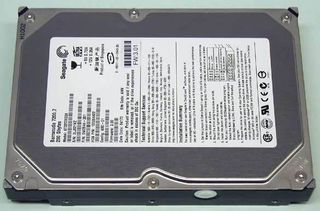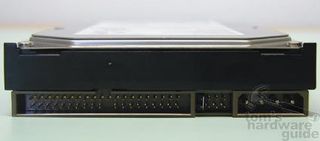Hitting 100 GB per Platter: Seagate ST3200822A
Seagate Barracuda 7200.7 Plus In Detail

From a technical point of view, Seagate has not changed much in making the transition from 80 to 100 GB per platter. The spindle speed is still 7,200 rpm, the seek time is rated at 8.5 ms and the shock resistance specification remains at 63 G operating and 350 G non-operating. Comparing drives on this basis may be interesting if you are a decision-maker who plans to buy dozens or even hundreds of drives, but for home and office users, the variations here should not make any difference.
We received the UltraATA/100 version of Seagate's new Barracuda 7200.7 drive. As we did not specifically ask for a Serial ATA version, we suppose that Seagate simply picked the interface that is most widely sold - and that is UltraATA. Though most new motherboards come with an integrated Serial ATA controller today, there is no urgent need to really switch to Serial ATA. This will change with the next generations of motherboards and chipsets, because not only will they come with four ports rather than two, but they will also support optical drives.
As you will see in the benchmark section, the UltraATA/100 interface is not a bottleneck for the 7200.7 at all. That also shows why Seagate never made any attempt to switch to UltraATA/133: There is no technical need for it.



The sample we received uses the UltraATA/100 interface.
Stay on the Cutting Edge
Join the experts who read Tom's Hardware for the inside track on enthusiast PC tech news — and have for over 25 years. We'll send breaking news and in-depth reviews of CPUs, GPUs, AI, maker hardware and more straight to your inbox.
Current page: Seagate Barracuda 7200.7 Plus In Detail
Prev Page The Cuda: Changes Next Page Test SetupMost Popular

